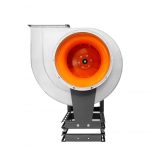There are many different options in lead shielding that can be used in the protection of individuals working around radiation. In radiology rooms and labs in medical and healthcare facilities, lead shields can include wearable aprons and smocks, patient covers and guards, as well as specific types of construction materials.
Construction lead shields for radiology rooms are designed to prevent radiation shielding and to stop x-rays and gamma radiation from escaping the specific room. The types of lead shields used in these applications can range from actual solid lead bricks to sheet and plate lead or lead-lined plywood or lead-lined gypsum board.
Factors Of Importance
All lead shields for radiology rooms are rated for the type of application. It is essential to choose the correct thickness of lead in the shielding material to effectively block the highest possible gamma and x-ray radiation.
This is determined by the type of radiation equipment in use, the specifics of the building construction, and specific considerations for the given application. In most cases, when using any type of lead-lined building material, fire rating is also important in making a choice of materials.
Typical Use
In most cases, lead shields for radiology rooms are standard, and top manufacturers of these products provide the option to choose from different standard lead thicknesses. This includes for lead sheet and plate as well as for the lead-lined plywood and gypsum options.
In most types of applications in general radiology, there lead blocks are not required as the gamma and x-ray radiation produced is not at a level to required advanced shielding.
In addition, radiology shielding can extend to x-ray glass and specialized frames. Lead angles and lead free-flow (lead shot) can be used to fill in any gaps or voids in space to ensure complete radiation protection.





